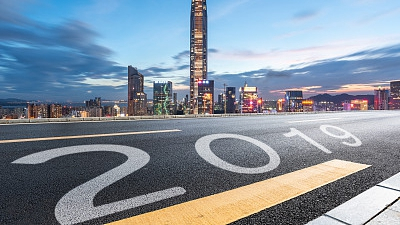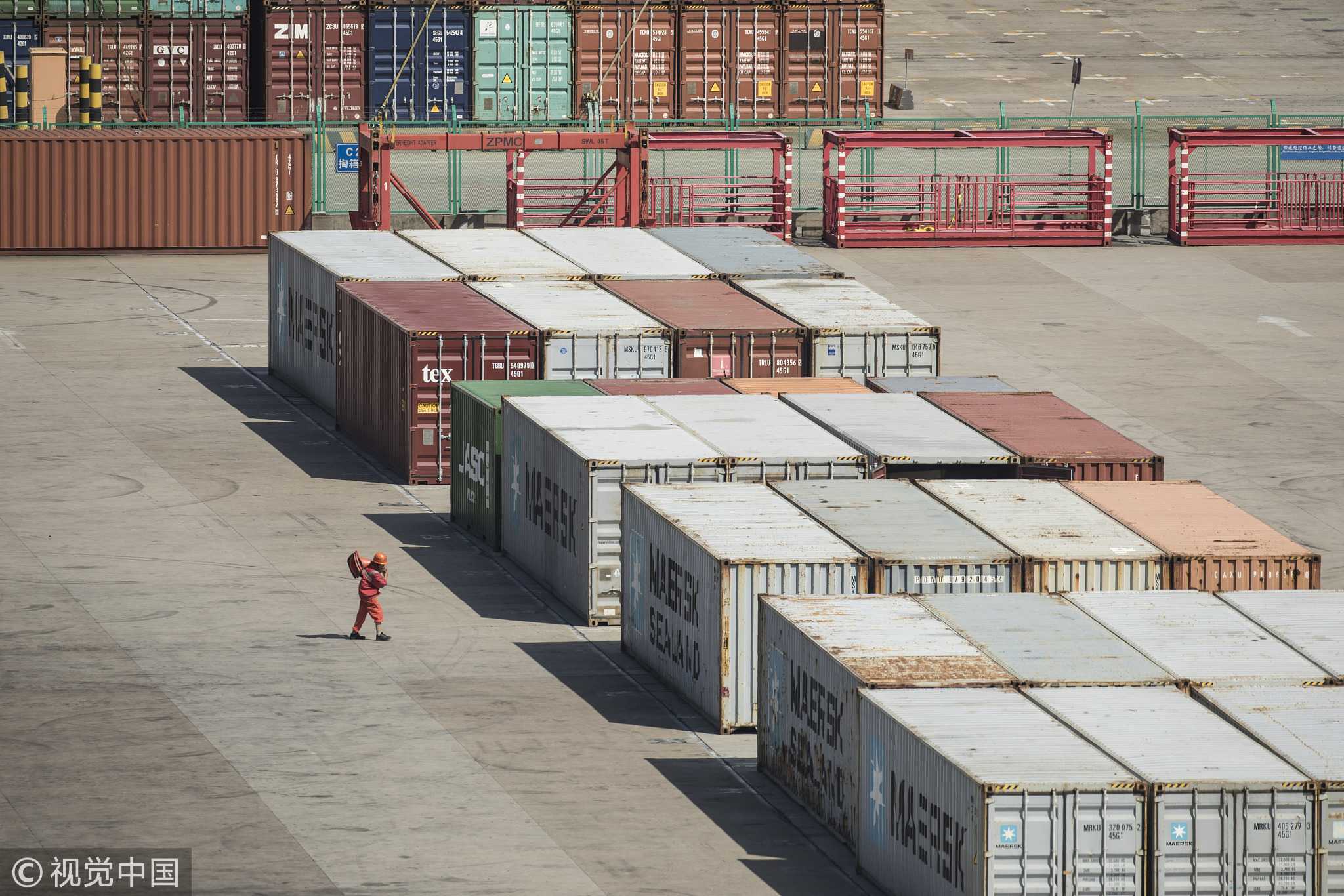
Opinions
20:09, 03-Jan-2019
Opinion: The New Year brings both uncertainty and opportunity for China's economy
Updated
19:29, 06-Jan-2019

Editor's note:The following is an edited translation of an article from the Chinese-language "Commentaries on International Affairs."
Looking back over the past year, China's President Xi Jinping said in his New Year message that "2018 has been a full year, and we approached it with steadfast determination," and that "China's sincerity and goodwill for maintaining world peace and promoting common development will not change." China has not only steadily advanced its own program of national reforms, but also worked to promote common development around the world.
In 2018, China launched a series of reform and opening-up measures, such as substantial reductions of tariffs and a cutback in the number of industries closed to foreign investment. It has also strengthened its intellectual property protections.

Containers stacked at Yangshan Deep Water Port in Shanghai, China, July 10, 2018. /VCG Photo
Containers stacked at Yangshan Deep Water Port in Shanghai, China, July 10, 2018. /VCG Photo
According to a recent World Intellectual Property Organization (WIPO) report, China had the world's largest number of domestic patents, trademarks, industrial designs and other intellectual property applications lodged in 2017, and the organization's Director General Francis Gurry said China has become one of the world's leading innovators. China's Supreme Court recently established an intellectual property court, which is further good news for both domestic and overseas investors.
The background to these measures is that China's reforms are entering what is called the "deep-water zone." From a domestic perspective, the economy still faces challenges. According to the latest data, the official purchasing managers' index (PMI) of China's manufacturing industry fell to 49.4 in December from 50.0 in November – in other words, it has fallen into the red. But the service industry is in good condition, with its PMI up from 53.4 in November to 53.8 in December. On the one hand, China's economic transformation is steadily advancing. On the other hand, there are still signs of potential problems ahead.
Although China is still a developing country in terms of per capita GDP, the size of its economy overall makes it second only to the United States. And in keeping with the responsibilities that come with playing a major role in the world economy, China has contributed to the maintenance of the global multilateral trading system.
Last year saw populism, protectionism, and unilateralism on the rise in parts of the world, carried along by a growing countercurrent against globalization. Although the trade frictions between China and the United States have eased somewhat, there is still much to be done. And China's new measures to reform and open its economy will further ease tensions between the world's two largest economies, and also contribute more broadly to growth and development worldwide.

Yellow vest protests continue for the seventh weekend in Marseille, France, December 29, 2018. /VCG Photo
Yellow vest protests continue for the seventh weekend in Marseille, France, December 29, 2018. /VCG Photo
Looking ahead, negotiators from China and the United States are expected to meet for talks in the first half of January. A meaningful agreement would benefit their national economies, and help stabilize their wider diplomatic relationship. Of course, there is uncertainty as to what the outcome of the negotiations might be. But what is known is that success will depend on both sides focusing on their long-term interests, not short-term point scoring.
Whatever the outcome, China will carry on deepening the reform of its economy, and becoming increasingly open to the world. As the history of China's 40 years of reform and opening-up has shown, every time China encounters a major challenge, it has always responded by pushing ahead with more reform rather than a retreat into seclusion.
(If you want to contribute and have specific expertise, please contact us at opinions@cgtn.com.)

SITEMAP
Copyright © 2018 CGTN. Beijing ICP prepared NO.16065310-3
Copyright © 2018 CGTN. Beijing ICP prepared NO.16065310-3